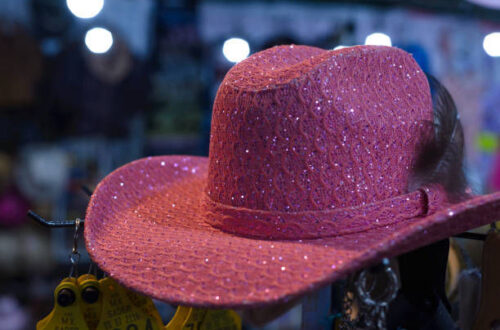Body piercing is a timeless form of self-expression that transcends cultures and generations. Among the many creative ways people decorate their bodies, ear piercings remain one of the most versatile and expressive options. In recent years, the conch piercing has gained immense popularity for its striking yet elegant appearance. It blends subtle sophistication with bold individuality, allowing people to enhance their ear’s natural shape while making a stylish statement.
In this in-depth guide, we will explore everything about conch piercings — from their meaning and procedure to healing, aftercare, pain levels, jewelry options, and safety tips. Whether you are considering getting one or are simply curious, this article will help you understand every aspect clearly and confidently.
1. What Is a Conch Piercing?
The conch (pronounced “konk”) refers to the large inner or outer cartilage area of the ear that resembles the spiral of a conch shell — hence the name. A conch piercing involves puncturing this area to insert jewelry, creating a bold yet graceful look that complements other ear piercings beautifully.
There are two main types of conch piercings:
| Type | Location on Ear | Jewelry Type | Visual Effect |
|---|---|---|---|
| Inner Conch Piercing | Through the central cup-shaped area close to the ear canal. | Studs or flat-back labrets. | Simple and elegant appearance. |
| Outer Conch Piercing | Through the outer edge or rim of the ear cartilage. | Hoops or captive bead rings. | Edgy and decorative look. |
Each type offers a distinct aesthetic, and some people even combine both for a double conch piercing, achieving a layered and artistic effect.
2. The History and Cultural Meaning of Conch Piercing
While conch piercings are modern fashion staples, the practice of ear cartilage piercing has deep historical and cultural roots. Ancient civilizations — from African tribes to South Asian cultures — used ear adornment to symbolize status, beauty, and spiritual connection.
In some traditions, piercings were believed to promote energy flow or signify milestones in life. The conch area was particularly symbolic, associated with inner strength and emotional balance due to its location close to the ear’s center — a metaphor for listening to one’s inner voice.
Today, conch piercings often represent confidence and individuality. They bridge the gap between minimalist elegance and alternative edge, appealing to both subtle and bold style preferences.
3. The Conch Piercing Procedure
Understanding the piercing process is essential before getting one. While it may seem intimidating due to the cartilage’s thickness, a professional piercer uses precise techniques to ensure minimal discomfort and maximum safety.
Step-by-Step Process:
- Consultation:
The piercer will discuss placement, jewelry type, and anatomy suitability. Some ear shapes may make certain placements better than others. - Preparation:
The ear is cleaned and sterilized to eliminate bacteria. Sterile gloves and single-use tools are mandatory for hygiene. - Marking:
The piercer marks the exact entry and exit points to ensure symmetry and correct alignment. - Piercing:
Using a sterile hollow needle, the piercer swiftly punctures the cartilage. Unlike lobe piercings, guns should never be used, as they can damage the ear tissue. - Jewelry Insertion:
The initial jewelry (usually titanium or surgical steel) is inserted immediately after the piercing. - Aftercare Instructions:
Detailed guidelines are provided to promote healing and avoid infection.
The procedure usually takes less than five minutes, but precision and cleanliness are crucial for success.
4. Pain Level and Sensation
Pain perception varies greatly between individuals, but conch piercings typically cause moderate discomfort. The cartilage is thicker than the earlobe, so the sensation can be more intense but short-lived.
Pain Comparison Table:
| Piercing Type | Pain Level (1–10) | Healing Time |
|---|---|---|
| Earlobe | 2/10 | 6–8 weeks |
| Helix | 5/10 | 3–6 months |
| Conch | 6–7/10 | 6–12 months |
| Tragus | 6/10 | 6–9 months |
| Industrial | 8/10 | 9–12 months |
During the piercing, you may feel pressure followed by a quick pinch. The area may throb or feel warm for several hours afterward. Mild soreness is normal for a few days, but severe pain or swelling may indicate infection and should be checked by a professional piercer or healthcare provider.
5. Healing Process and Timeline
Healing a conch piercing takes 6 to 12 months, depending on aftercare, jewelry type, and personal health. Cartilage has less blood flow than soft tissue, so it heals slower.
Stages of Healing:
- Initial Healing (Week 1–3):
Expect swelling, redness, and tenderness. Clean twice daily with saline solution. Avoid sleeping on the pierced side. - Intermediate Phase (Month 1–4):
Swelling reduces, and the wound begins internal healing. Do not twist or remove jewelry during this time. - Final Phase (Month 5–12):
The piercing stabilizes, and tissue strengthens around the jewelry. You may switch jewelry after full healing, confirmed by your piercer.
Patience is key. Rushing the process or touching the piercing frequently can extend the healing period.
6. Aftercare and Cleaning Routine
Proper aftercare is vital for preventing infection and promoting smooth healing.
Recommended Aftercare Routine:
| Step | Action | Frequency |
|---|---|---|
| Clean with Saline Solution | Use sterile saline or sea salt soak. | Twice daily. |
| Dry Gently | Use clean paper towel or air dry. | After cleaning. |
| Avoid Touching | Don’t twist or handle jewelry. | Always. |
| Change Pillowcase Regularly | Reduces bacteria contact. | Every 2–3 days. |
| Avoid Makeup and Hair Products | Keep chemicals away. | Daily. |
Avoid:
- Swimming in pools, lakes, or hot tubs during early healing.
- Using alcohol, hydrogen peroxide, or antibiotic creams (they slow healing).
- Sleeping directly on the pierced ear.
Consistency and cleanliness will drastically reduce the risk of infection.
7. Choosing the Right Jewelry
Jewelry choice affects comfort, healing speed, and appearance. Initially, piercers recommend hypoallergenic metals such as titanium or surgical-grade steel because they minimize irritation.
Jewelry Material Options:
| Material | Pros | Cons |
|---|---|---|
| Titanium | Lightweight, hypoallergenic, durable. | Higher cost. |
| Surgical Steel | Affordable, safe for most. | May irritate very sensitive skin. |
| Gold (14k or higher) | Luxurious, non-corrosive. | Expensive; must avoid gold-plated. |
| Niobium | Hypoallergenic, corrosion-resistant. | Less common in shops. |
After healing, you can experiment with hoops, studs, barbells, or decorative rings to personalize your look.
8. Types of Conch Piercing Jewelry
The versatility of conch piercings allows for multiple jewelry styles depending on preference and anatomy.
| Jewelry Type | Description | Best For |
|---|---|---|
| Flat-Back Studs | Small and subtle; ideal for inner conch. | Minimalist looks. |
| Hoops / Captive Bead Rings | Wrap around the outer ear cartilage. | Outer conch piercings. |
| Clickers | Hinged rings with decorative fronts. | Healing and easy insertion. |
| Barbells | Straight or curved metal bars. | Unique or custom designs. |
Mixing jewelry types creates curated ear aesthetics, blending the conch with helix, tragus, or rook piercings for a cohesive ear design.
9. Common Risks and How to Prevent Them
Although safe when done professionally, conch piercings can present risks if neglected.
Possible Complications:
| Problem | Symptoms | Prevention / Solution |
|---|---|---|
| Infection | Redness, pain, discharge, warmth. | Maintain hygiene, avoid touching. |
| Bumps or Keloids | Raised scar tissue. | Use gentle cleaning, avoid trauma. |
| Migration or Rejection | Jewelry moves or skin thins. | Choose proper jewelry size and material. |
| Prolonged Swelling | Lasts beyond 2 weeks. | Consult piercer or doctor. |
Cartilage piercings heal slower than earlobes, so consistent aftercare is essential. If symptoms worsen, professional evaluation is crucial — do not attempt to self-treat with harsh chemicals.
10. Combining Conch Piercings with Other Styles
Conch piercings complement other ear piercings beautifully, creating what’s known as a “curated ear.” The trend involves combining multiple piercings into a personalized layout that reflects your taste and personality.
Popular Pairings:
- Helix + Conch: Creates a vertical line of jewelry.
- Tragus + Inner Conch: Adds depth near the ear canal.
- Lobe + Outer Conch Hoops: Perfect for balanced asymmetry.
By blending shapes, metals, and sizes, you can achieve a unique and cohesive design that enhances your natural ear contour.
11. Cost of a Conch Piercing
The cost varies depending on location, piercer expertise, and jewelry material.
| Region | Average Price Range |
|---|---|
| United States | $50 – $100 |
| United Kingdom | £35 – £70 |
| Europe | €40 – €90 |
| Asia | ₹2,000 – ₹5,000 / ¥6,000 – ¥10,000 |
Always choose quality over price. A professional piercer ensures proper hygiene, accurate placement, and reduces risk of complications — all of which are worth the investment.
12. Conch Piercing for Men and Women
Though once seen as more popular among women, conch piercings are gender-neutral and increasingly embraced by men. The inner conch gives a refined, subtle style, while outer conch hoops add a rugged or artistic appeal.
It’s a versatile piercing suitable for any gender, age group (above 16 usually), or aesthetic preference — minimalist, bohemian, or bold.
13. Healing Nutrition and Lifestyle Support
Healing a conch piercing isn’t just external; your internal health matters.
Tips for Faster Healing:
- Eat foods rich in vitamin C, zinc, and protein.
- Stay hydrated to support tissue regeneration.
- Avoid alcohol and smoking during initial healing.
- Get enough sleep for immune function.
A healthy lifestyle complements your body’s ability to heal efficiently and beautifully.
14. Myths vs. Facts About Conch Piercings
| Myth | Fact |
|---|---|
| “It hurts unbearably.” | Pain is moderate and brief; most people handle it easily. |
| “Piercing guns are faster.” | Guns damage cartilage; needles are safer and cleaner. |
| “It heals in a month.” | True healing takes up to 12 months. |
| “You can twist it to clean.” | Twisting delays healing and introduces bacteria. |
Knowing the truth prevents mistakes and builds confidence before and after your procedure.
15. Future Trends in Conch Piercing and Jewelry Design
Body art is constantly evolving. The future of conch piercing embraces:
- Eco-friendly jewelry using recycled metals.
- Hybrid materials like bio-titanium and ceramic-coated studs.
- Smart jewelry integrated with fitness or temperature sensors.
- Minimalist luxury designs focusing on comfort and longevity.
Customization is the future — allowing people to express individuality without compromising health.
16. Final Thoughts: Why Choose a Conch Piercing?
Choosing a conch piercing is more than a fashion choice; it’s a personal statement. It represents courage, individuality, and the balance between subtle beauty and bold creativity. Its placement near the ear’s center draws attention to facial symmetry while allowing endless jewelry variations.
With proper care, a conch piercing becomes a lasting and beautiful enhancement that reflects your personality. Whether you prefer a single stud or a radiant hoop, this piercing invites creativity and confidence in equal measure.
FAQs
1. How painful is a conch piercing?
The pain is moderate, around 6–7 on a scale of 10. The sensation feels like pressure followed by a quick pinch. Discomfort fades within hours.
2. How long does it take to heal?
A conch piercing usually takes 6–12 months to heal completely. Consistent aftercare is essential during this period.
3. Can I sleep on my new conch piercing?
Avoid sleeping on the pierced side for at least 3 months. Pressure can cause swelling, irritation, or jewelry displacement.
4. When can I change my jewelry?
You can safely change jewelry after the piercing is fully healed, usually between 8–12 months, upon your piercer’s approval.
5. Are conch piercings safe?
Yes, when performed by a professional using sterile equipment. Following proper aftercare minimizes infection risks and promotes smooth healing.




